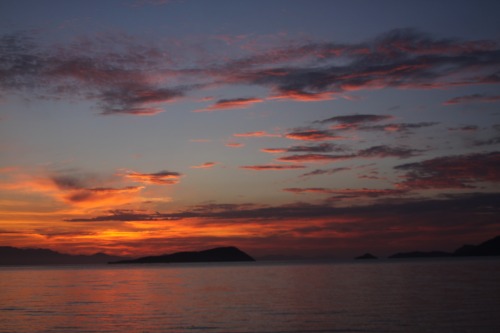tough to access the Internet, but thought I would share this morning’s view from my cot. Tough to complain about field research!

Your Custom Text Here
tough to access the Internet, but thought I would share this morning’s view from my cot. Tough to complain about field research!

never fear - I will get back to the occasional post, but we have become new homeowners, and currently - well, our bathroom looks like this:
so we are occupied trying to make the place livable, as well as research and we each have a lot of undergrads in the lab this summer!
Will get back to posting bits of science trivia soon!
drew
OK, I dont think they have necks at all, but if you want to learn more, ask the expert….
http://jlinck.wordpress.com/2012/05/01/the-popular-and-abundant-native-littleneck-clam/
lots of entries to catch up on - Hayley has a couple of great entries about southern CA species, the CA Horn Snail and “dead man’s fingers”. Check out http://hayley144.wordpress.com/
And Brian did a nice writeup on Cryptomya at http://bjuhl472.wordpress.com/2012/04/26/delving-deep-for-the-mysteries-of-the-cryptic-cryptomya-californica-14/
While Sam did a nice writeup on the bean clam at http://sammsanfran.wordpress.com/ , Morgan was busy covering Melampus and Zostera, and Kevin, not to be outdone, took to the books to learn all he could about a little-known bivalve http://kstolzenbach88.wordpress.com/

Not really - as best I can tell, the proper name is the “western barrel bubble snail”. Still, an interesting little mollusk who is abundant and overlooked!
Kevin put up two more blog posts - one on moon snails and one on mytilus. AND he loves alliteration!
Yes, he does call it a “mood snail”, which is a wonderful idea for a product.

trying to get caught up here, so lots of links and notes to add - this one is a cannot-miss - an entertainingly written tale by Brian Juhl about Mytilus californianus!

ok, admittedly, that is a lot of headline for a story about bubble snails, but they really ARE pretty cool creatures, and Kevin wrote a nice piece about them - click here to read it!

check out Morgan’s blog entry on the adorable barred pipefish!


A new blog entry about Atherinops affinis - she says they are “amazing”!

I could not be prouder of Shara, the organization (its staff and students), or my (small) role as Science Director.
Very interesting article in Science.

One exception to the high retention of women faculty is Math departments - I wonder why?

Not surprising, but interesting finding out of UC Berkeley demonstrating that some restored wetlands, even 100+ years old, do not end up being equal to natural wetlands in terms of animal communities or carbon storage. The study looked at factors such as wetland size, latitude, and inundation, and saw strong relationships between these and restoration success.
So - we still have work to do on learning how to better manage and restore these systems!
I just discovered this great program that runs on OS X.
Essentially, you tell it the tidal heights (or range) in which you are interested, the timeframe of interest, and it spits out an ics file (like iCal or BusyCal use) containing the dates, times, and tide info that fit those parameters.
So, say you want to perform a study that requires minus tides (<0.0m MLLW), and you want to do your sampling in April or May, and it needs to be done during the afternoon. You can simply give the program those parameters, hit "compute tides", and it will magically spit out a .ics file (or text file) that you can then use to plan your sampling dates. I can think of a ton of ways this could be great - trying to find specific tidal heights for sampling or tidepooling; planning trips to locations that require low tides for access; or making sure certain stretches of water will be navigable.

http://www.makerbot.com/blog/tag/project-shellter/
There has been a lot of talk recently (and even not-so-recently) about the problems with peer review in science. This article in Wired is particularly good, in that it provides links to many of the primary resources to allow you to evaluate the problem (and the proposed solutions). Interesting reading.